#SEO and Analytics
Explore tagged Tumblr posts
Text
Essential Digital Marketing Tools Anyone Can Master
Mastering digital marketing starts with knowing the right tools to use. These tools are not just for experts—they’re designed to be user-friendly and accessible to anyone wanting to improve their digital presence. Here’s a curated list that will help you get started, even if you’re a complete beginner.
1. Google Analytics: Your Window into Website Traffic
Google Analytics is like the ultimate map of your website’s traffic. By installing it on your site, you’ll see where your visitors come from, what they’re reading, and how long they stick around. The best part? Google provides free resources to help beginners understand the basics. Once you’re comfortable, you’ll be able to monitor key stats like page views, session duration, and which pages people bounce off from, giving you insights to improve your site’s content.
Try This: Start with the Audience Overview report to see where visitors are coming from, and check the Behavior section to understand popular content.
2. Canva: Create Eye-Catching Visuals with Ease
Creating beautiful graphics for social media, blogs, and ads doesn’t require a design degree when you have Canva. With its intuitive drag-and-drop interface, anyone can pick a template, add their text, colors, and images, and voilà—a professional-looking graphic! It’s perfect for social posts, flyers, or any visual content you want to create.
Pro Tip: Start with a template, customize the colors and fonts to match your brand, and don’t forget to explore Canva’s vast library of stock images and icons.
3. Mailchimp: The Friendliest Email Marketing Platform
If you’re interested in email marketing, Mailchimp is a great place to start. Its straightforward interface helps you design, automate, and send emails that engage your audience. With Mailchimp’s templates, you can easily put together a professional email, even if it’s your first time.
Getting Started: Set up a free account, create a small contact list, and use a template to design your first email newsletter.
4. Hootsuite: Your Social Media Organizer
Hootsuite is a lifesaver for anyone managing multiple social media accounts. This tool lets you schedule posts, track engagement, and even see what people are saying about you across different platforms—all in one dashboard. Hootsuite’s simplicity makes it accessible to anyone, even beginners.
Try This: Link your social media accounts, schedule a week’s worth of posts, and track how each post performs.
5. SEMrush: Discover SEO Opportunities
If you’re interested in making your content more visible on search engines, SEMrush is your go-to tool. It’s great for researching keywords, seeing what your competitors are doing, and even analyzing your site’s SEO performance. While it may look complex, SEMrush provides tutorials that help you learn the basics quickly.
First Step: Start with a keyword search relevant to your content or business, and see what similar sites are ranking for. This can help you build an effective SEO strategy.
6. Google Ads: Explore the World of Online Advertising
Google Ads lets you create paid ads that appear at the top of Google search results. While the thought of running ads might feel advanced, Google Ads provides a step-by-step setup wizard to guide you through. Once you’re familiar, you’ll be able to target specific keywords and audiences.
Quick Tip: Start small. Set a low budget, select a few relevant keywords, and track your ad’s performance to see what works best.
7. BuzzSumo: Find Trending Content Topics
If you want to know what topics people are currently interested in, BuzzSumo is your answer. This tool helps you find trending content in your niche by showing you what’s popular across the web. It’s perfect for discovering new ideas and understanding what your audience cares about.
How to Use It: Enter a keyword related to your topic, and BuzzSumo will show you the most shared content on that topic. This can help you brainstorm ideas and create relevant content.
8. Google Trends: Stay on Top of What’s Popular
Google Trends is ideal for finding out how popular a topic is over time. Whether you’re looking for seasonal trends or just want to know what’s buzzing, this tool can guide your content strategy.
Try This: Enter a keyword, set the date range, and explore how interest in the topic has changed. Use this information to plan timely content.
9. Trello: Organize Your Digital Marketing Projects
Trello is a simple project management tool that helps you organize tasks visually. For digital marketers, it’s a fantastic way to plan campaigns, track content ideas, and manage projects. Each project can have its own board with customizable lists and cards, making project tracking a breeze.
Getting Started: Set up a board for your content or campaign ideas, create cards for individual tasks, and move them as you make progress.
10. Yoast SEO: Make Your Content SEO-Friendly (for WordPress Users)
Yoast SEO is a beginner-friendly WordPress plugin that helps you optimize your content for search engines. As you create a post, Yoast will prompt you with tips, like using keywords in titles, meta descriptions, and headings, making SEO feel much simpler.
Pro Tip: Follow Yoast’s prompts as you write, and aim for the “green light” score to improve your content’s searchability.
Conclusion: Start Simple, and Build Your Skills
These tools are not only effective but also designed with beginners in mind. With some practice, you’ll soon be using them like a pro. Each one adds value to your digital marketing skills, whether it’s understanding your audience, creating engaging visuals, or planning content efficiently. Remember, the journey of mastering digital marketing starts with familiarizing yourself with these essential tools.
#Digital Marketing Basics#Marketing Tools#Beginner Marketing#Essential Marketing Tools#Digital Marketing Guide#Marketing for Beginners#Marketing Essentials#SEO and Analytics#Content Creation Tools#Social Media Tools#Online Marketing Resources#Digital Marketing Strategy#New Marketers#Marketing Skills Development#Tools for Digital Success
2 notes
·
View notes
Text
SpeedyShort.com: The Ultimate URL Shortening Tool for Marketers
SpeedyShort.com is the ultimate URL shortening tool for digital marketers, offering custom-branded links, advanced analytics, and seamless integration with popular platforms like Google Analytics and social media management systems. It enhances shareability, improves click-through rates, and provides in-depth performance insights, allowing marketers to optimize their campaigns effectively. With secure links, password protection, and team collaboration features, SpeedyShort.com is the perfect solution for businesses.
0 notes
Text
I have a lot of feelings about Benedikt's grief in the first bit of Our Violent Ends and how he deals with it/how it affects his relationships with other people, but I don't know how to put it eloquently so I'll sum it up by saying I want that shit injected into my veins
#p.s. the way roma describes benedikt screaming when he realizes marshall is dead haunts my thoughts every day#these violent delights#our violent ends#secret shanghai#chloe gong#benedikt montagov#marshall seo#roma montagov#alisa montagova#im tagging those three bc it involves them too#should i bust out a multi thousand word analytical essay like i did for kerch + ghezenism + the van ecks#perhaps#but not now#anyway#benmars
97 notes
·
View notes
Text

In today’s digital world, data analytics plays a crucial role in optimizing digital marketing channels such as social media marketing, search engine optimization (SEO), and email marketing campaigns. Read More...
#digital strategies#a digital marketing agency#marketing#boost digital#digital agencies#digital market#digital expert#social media#digital marketing#digital solution#boost digital expert#Effective Digital#agency boost#boost media#identify trends#website analytic#seo agency#ppc agency#google ads#digital marketing agency#ppc
7 notes
·
View notes
Text
New Business Marketing Tips And Tricks for Success
Starting a new business can be an exciting endeavor, but it also comes with its fair share of challenges, especially in the competitive landscape of today's market. Effective marketing is crucial for the success of any new venture. Here are four essential marketing tips and tricks to help your new business thrive.
Define Your Target Audience: Before diving into marketing efforts, it's essential to identify and understand your target audience. Define your ideal customer persona by considering demographics, interests, pain points, and buying behaviors. Conduct market research to gather valuable insights that will guide your marketing strategies. Tailoring your messages and campaigns to resonate with your target audience will significantly increase your chances of success.
Once you have a clear picture of your audience, choose the most suitable marketing channels to reach them effectively. Social media, email marketing, content marketing, and pay-per-click advertising are just a few options to consider. Your choice of channels should align with where your audience spends their time online.

Create Compelling Content: Content marketing is a powerful tool for new businesses to establish their brand and build credibility. Develop high-quality, informative, and engaging content that addresses the needs and interests of your target audience. This content can take various forms, including blog posts, videos, infographics, and podcasts.
Consistency is key when it comes to content creation. Develop a content calendar to plan and schedule regular updates. Providing valuable content not only helps you connect with your audience but also boosts your search engine rankings, making it easier for potential customers to find you.

Leverage Social Media: Social media platforms have become indispensable for marketing in today's digital age. Create profiles on relevant social media platforms and engage with your audience regularly. Share your content, interact with followers, and participate in industry-related discussions.
Paid advertising on social media can also be a cost-effective way to reach a broader audience. Platforms like Facebook, Instagram, and LinkedIn offer targeting options that allow you to reach users who match your ideal customer profile.

Monitor and Adapt: Marketing is an ever-evolving field, and what works today may not work tomorrow. To stay ahead of the curve, regularly monitor the performance of your marketing efforts. Analyze key metrics such as website traffic, conversion rates, and return on investment (ROI). Use tools like Google Analytics and social media insights to gather data and insights.
Based on your findings, be prepared to adapt your strategies and tactics. If a particular marketing channel isn't delivering the expected results, reallocate your resources to more promising avenues. Stay up-to-date with industry trends and keep an eye on your competitors to ensure your marketing efforts remain relevant and competitive.
In conclusion, effective marketing is essential for the success of any new business. By defining your target audience, creating compelling content, leveraging social media, and continuously monitoring and adapting your strategies, you can position your new business for growth and long-term success in a competitive market. Remember that success may not come overnight, but with persistence and the right marketing approach, your new business can thrive.

#business#digitalbusiness#digitalmarketing#seo#market analysis#data analytics#marketing#management#sales#learn digital marketing#Digital marketing course#seo expert#business success#businessgrowth
88 notes
·
View notes
Text

Elevate Your Brand, Rule the Digital Space with Cybrom Technology.
#digital marketing#Social media marketing#Data science#data analytics#data analyst course#seo#search engine optimization#google ads
5 notes
·
View notes
Text
Google Analytics: A Comprehensive Overview
In the ever-evolving virtual panorama, information user conduct and internet site performance is essential for businesses and content material creators. Google Analytics, one of the most extensively used internet analytics gear inside the global, affords the insights essential to make knowledgeable choices, optimize person reports, and force online success. Launched through Google in November 2005 after obtaining the internet analytics enterprise Urchin, Google Analytics has considering the fact that advanced into a effective platform for analyzing information from websites and apps.
Google Analytics For Website
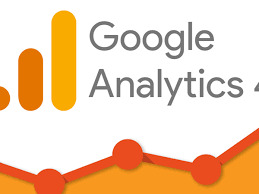
What is Google Analytics?
Google Analytics is a loose web analytics provider presented with the aid of Google that tracks and reviews website site visitors. It presents targeted facts and insights about how customers have interaction along with your internet site or application. From identifying the wide variety of traffic to expertise their conduct and conversion paths, Google Analytics permits companies to benefit a clear photograph in their online presence.
In 2020, Google introduced Google Analytics 4 (GA4), which marked a tremendous shift from the preceding Universal Analytics (UA). GA4 is designed to provide a more holistic view of the client journey, with a robust emphasis on gadget gaining knowledge of and move-platform tracking.
How Does Google Analytics Work?
Google Analytics works through setting a small snippet of JavaScript code on every web page of your internet site. When someone visits the internet site, the code collects facts approximately their behavior, device, browser, place, and more. This facts is then despatched to Google’s servers, where it's miles processed and made to be had inside the form of reports and dashboards.
In GA4, the records version is occasion-based, meaning the whole lot a person does—clicks, scrolls, form submissions—is treated as an event. This version offers extra flexibility and intensity in tracking person interactions as compared to the session-primarily based model utilized in Universal Analytics.
Key Features of Google Analytics
1. Real-Time Reporting
Real-time reviews permit users to peer who's on their website online right now, what pages they’re viewing, where they came from, and what movements they’re taking. This is specifically useful for tracking the impact of advertising and marketing campaigns or internet site modifications as they happen.
2. Audience Reports
Audience reports provide unique data about the human beings traveling your website, together with demographics (age, gender), interests, geographic location, device type, browser, and more. These insights help tailor content and advertising strategies to goal the proper target audience.
Three. Acquisition Reports
These reports display how customers are locating your web site—whether or not through organic search, paid ads, social media, e-mail campaigns, or direct visits. By studying acquisition channels, corporations can decide which advertising efforts are riding the most visitors.
4. Behavior Reports
Behavior reviews monitor how users have interaction with your website. This includes metrics like page views, soar price, time on page, and navigation paths. These insights assist discover excessive-performing content material and pages which can want improvement.
5. Conversion Tracking
Google Analytics lets in customers to installation and track desires (e.G., purchases, sign-ups, downloads) and e-commerce transactions. This permits organizations to degree the effectiveness of their sales funnel and optimize for higher conversion fees.
6. Custom Dashboards and Reports
Users can create custom designed dashboards and reviews to focus on the metrics maximum relevant to their business desires. This flexibility makes it less difficult to reveal overall performance and make information-pushed selections.
7. Integration with Google Tools
Google Analytics integrates seamlessly with different Google equipment like Google Ads, Search Console, Data Studio, and Tag Manager, making an allowance for a extra unified and powerful analytics ecosystem.
Benefits of Using Google Analytics
1. Data-Driven Decision Making
Google Analytics empowers corporations to base their decisions on real person facts rather than guesswork. With get right of entry to to real-time and historical records, agencies can become aware of tendencies, examine advertising efforts, and modify strategies as a result.
2. Improved User Experience
By understanding how customers interact together with your website online, you can make informed adjustments to enhance usability, lessen jump charges, and guide users toward desired movements.
3. Enhanced Marketing ROI
With insights into which channels pressure the maximum site visitors and conversions, corporations can allocate marketing budgets more efficiently and refine their campaigns for better consequences.
4. Goal Tracking and Performance Monitoring
Setting up goals and KPIs in Google Analytics makes it less difficult to reveal development over the years and make sure that digital efforts are aligned with broader enterprise targets.
5. Customization and Flexibility
Whether you're a small blogger or a large enterprise, Google Analytics gives customizable capabilities that cater to various degrees of expertise and complexity.
Using Google Analytics Effectively
To get the most out of Google Analytics, it’s critical to observe high-quality practices and continuously refine your method. Here are some hints:
1. Define Clear Goals
Start by using figuring out what you need to gain along with your website—greater income, lead technology, person engagement, etc. Then, installation applicable dreams in GA4 to song development.
2. Segment Your Data
Use segments to interrupt down your audience into agencies based on behavior, place, site visitors source, and greater. This allows for greater granular evaluation and tailored marketing efforts.
Three. Leverage Events and Conversions
GA4’s occasion-primarily based version allows for deep monitoring of person moves. Set up custom occasions (e.G., button clicks, video views) and conversions to get an in depth knowledge of consumer conduct.
Four. Monitor and Compare Periods
Use time-based comparisons to analyze trends and degree the impact of adjustments or campaigns. For example, comparing site visitors month-over-month or 12 months-over-year allows spot seasonality or increase.
Five. Regularly Audit Your Setup
Ensure your monitoring code is well applied, dreams are configured effectively, and filters are implemented as wished. Misconfigured analytics can result in misguided information and misguided choices.
Google Analytics four vs. Universal Analytics
As of July 1, 2023, Universal Analytics has stopped processing new records, and GA4 is now the same old version. Here’s a short contrast:
Feature Universal Analytics (UA) Google Analytics 4 (GA4)
Data Model Session-based totally Event-based totally
Cross-platform Tracking Limited Full (Web + App)
Machine Learning Insights Basic Advanced
Privacy & Compliance Less superior Designed for privateness-first world
Reporting Interface Familiar however rigid More flexible and customizable
GA4 reflects the evolving panorama of virtual analytics—more emphasis on consumer privacy, pass-device behavior, and predictive talents.
Privacy and Compliance Considerations
With increasing privateness guidelines like GDPR and CCPA, companies should deal with person records responsibly. Google Analytics affords options for information retention, anonymizing IP addresses, and acquiring user consent. GA4 also gives better equipment for dealing with information series in a privateness-conscious manner.
2 notes
·
View notes
Text
AI Reputation Manager : Le Nouveau Métier pour Référencer Votre Entreprise sur les Plateformes IA
L’intelligence artificielle (IA) transforme notre façon de communiquer, d’interagir et même de gérer la réputation des entreprises. Aujourd’hui, un nouveau métier émerge : l’AI Reputation Manager. Ce professionnel est spécialisé dans l’optimisation de la présence et de la réputation d’une entreprise sur les plateformes alimentées par l’IA. Ce rôle s’inscrit désormais dans l’offre de Communication & Marketing Digital de Calliope Services, qui accompagne les entreprises dans leur transformation digitale.
L’intelligence artificielle (IA) transforme notre façon de communiquer, d’interagir et même de gérer la réputation des entreprises. Aujourd’hui, un nouveau métier émerge : l’AI Reputation Manager. Ce professionnel est spécialisé dans l’optimisation de la présence et de la réputation d’une entreprise sur les plateformes alimentées par l’IA. Ce rôle s’inscrit désormais dans l’offre de Communication…
#AI#AI Reputation Manager#backlinks#Bing Chat#Calliope Services#ChatGPT#copywriting SEO#Google Analytics 4 (GA 4)#Google Bard#IA#Omnicanalité#Perplexity.ai#Plateformes IA#Semrush#SEO#SERP#Traitement du Langage Naturel (NLP)
5 notes
·
View notes
Text
youtube
#digital marketing#@desmondjohnson183#marketing strategy#DeepSeek AI#digital marketing AI#open-source AI#AI in marketing#AI-driven content creation#predictive marketing#AI chatbots#AI-powered advertising#voice search optimization#influencer marketing AI#ethical AI#data analytics#AI customer engagement#AI-powered SEO#future of digital marketing.#Youtube
3 notes
·
View notes
Text
#digital marketing#onlinemarketingtips#seo services#DeepSeek AI#digital marketing AI#open-source AI#AI in marketing#AI-driven content creation#predictive marketing#AI chatbots#AI-powered advertising#voice search optimization#influencer marketing AI#ethical AI#data analytics#AI customer engagement
3 notes
·
View notes
Text
Few articles mentioned about LinkTree not good for SEO analytics as
1.Decision paralysis people can't decide which link to click, if the list is long
2. The main goal to get views or land on the website shop to buy products may get distracted as they can click other links.
Source https://zebrabusinesssolutions.co.uk/linktree-bad-seo/#:~:text=The%20problem%20with%20Linktree%20is,landing%20page%20full%20of%20links.
To think about it, we don't have official website for checkout delivery yet, that's why it's on social media for promotion for now.
I'll figure that out 😂 Will do a separate post to whatever update comes!
https://zebrabusinesssolutions.co.uk/linktree-bad-seo/#:~:text=The%20problem%20with%20Linktree%20is,landing%20page%20full%20of%20links
#Spotify#centuriesceleb#lovecenturies#facebook#shopee#threads#tiktok#2025#business#happynewyear#lazada#seo#analytics#insta#Instagram#instagram reels#reels#reelsvideo#reelsviral#reelsinstagram#fyp#fypシ#fypage#tumblr fyp#viral#trend#google#search engine optimization#website#shop
2 notes
·
View notes
Text
Boost Your Online Presence: A Beginner's Guide How to Increasing Website Traffic
In today’s digital age, where the virtual world reigns supreme, a robust online presence is your ticket to success. Whether you’re an aspiring blogger, an e-commerce entrepreneur, or a passionate individual looking to make your mark, increasing website traffic is the first step towards achieving your online aspirations. Welcome to our comprehensive guide, Boost Your Online Presence: A Beginner’s Guide How to Increasing Website Traffic.
My Best Recommended & Proven Way to Make $100 Daily — Watch THIS FREE Training to START >>
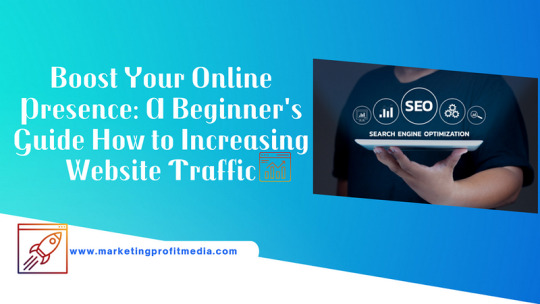
In this digital journey, we will explore the subtleties of maximising your presence on the web in order to achieve your goals. We’ve got you covered in every aspect of digital marketing, from perfecting the science of Search Engine Optimisation (SEO) to capitalising on the influence of content marketing and social media tactics. By the time you reach the conclusion of this route, you’ll be well-versed in the techniques that will bring an avalanche of visitors to your website and help you achieve your goals in the digital world. So buckle up, because we’re about to go on an incredible journey together!
Why Does Website Traffic Matter?
Website traffic is the lifeblood of your online presence. It’s a reflection of your website’s visibility and reach. More traffic means increased opportunities for achieving your goals, whether it’s growing your brand, generating leads, making sales, or sharing your passion. In essence, website traffic is the fuel that propels your online success, making it a fundamental metric to track and improve.
1. What is Website Traffic?
Website traffic refers to the number of visitors who access your website. It’s a crucial metric that measures your online reach. Understanding the sources and types of website traffic is the first step toward boosting your online presence.
Organic Traffic: Visitors who find your site through search engines like Google.
Direct Traffic: People who access your site directly, either by typing the URL or using bookmarks.
Referral Traffic: Visitors who arrive at your site through links from other websites.
Social Media Traffic: Traffic generated through social media platforms.
Paid Traffic: Visitors acquired through paid advertising, like Google Ads.
2. Setting Realistic Goals
Setting realistic goals is the compass that guides your journey towards a thriving online presence. By defining clear and achievable objectives, you create a roadmap for success. These goals might encompass increasing monthly visitors, boosting newsletter sign-ups, or improving conversion rates. Realistic goals provide direction and motivation, helping you measure and celebrate your progress in the dynamic world of digital presence.
My Best Recommended & Proven Way to Make $100 Daily — Watch THIS FREE Training to START >>
3. Search Engine Optimization (SEO)
Search Engine Optimization (SEO) is the art of enhancing your website’s visibility in search engine results. It’s a multifaceted strategy encompassing on-page and off-page techniques. On-page SEO involves optimizing individual pages with relevant keywords and quality content. Off-page SEO, on the other hand, focuses on building authority through backlinks and social signals. Together, these efforts improve your website’s rank, making it easier for potential visitors to find your online content. It’s all about making your website more visible to search engines like Google.
On-Page SEO
On-page SEO involves optimizing individual web pages for search engines. Here are key factors to consider:
Keywords: Choose relevant keywords for each page and incorporate them naturally in your content.
Meta Titles and Descriptions: Craft compelling meta titles and descriptions to encourage clicks from search results.
Quality Content: Create informative and engaging content that keeps visitors on your site.
Page Speed: Ensure your website loads quickly to improve user experience.
Off-Page SEO
Off-page SEO focuses on activities outside your website that impact your online presence:
Backlinks: Build high-quality backlinks from reputable websites to boost your site’s authority.
Social Signals: Engage on social media to increase your content’s visibility and shareability.
Local SEO: If you have a physical location, optimize for local search to attract nearby customers.
4. Mobile Optimization
Mobile optimization is the process of tailoring your website to provide an excellent user experience on smartphones and tablets. With mobile devices dominating internet access, optimizing for them is essential. It enhances your site’s speed, layout, and functionality on smaller screens, making it more user-friendly. Mobile optimization not only improves SEO but also ensures you don’t miss out on potential visitors. Here’s why:
Mobile-friendliness boosts your SEO ranking.
It improves the user experience.
Increases the likelihood of retaining mobile visitors.
5. Quality Content Creation
Quality content creation is the cornerstone of engaging and retaining website visitors. It involves in-depth research, understanding your audience’s interests, and crafting valuable, informative, and engaging material. Using multimedia elements like images, videos, and infographics enriches the user experience. Employing storytelling techniques also adds an emotional touch, making your content more relatable and shareable, ultimately driving increased website traffic. Consider the following tips:
Research your target audience and their interests.
Develop a content calendar for consistency.
Use multimedia elements like images, videos, and infographics.
Incorporate storytelling to engage readers emotionally.
6. Blogging and Guest Posting
Blogging and guest posting are dynamic tools for driving website traffic. Through regular, informative, and shareable blog posts, you engage your audience. Guest posting on reputable websites in your niche extends your reach to a broader audience, enhancing your brand’s visibility. It’s a two-pronged approach, combining your content’s magnetism and the reach of established platforms, ensuring your website benefits from increased traffic and exposure.
7. Choosing the Right Platforms
Choosing the right social media platforms is vital. Each platform caters to distinct demographics and interests. Facebook suits various niches, while Instagram emphasizes visuals. LinkedIn excels for B2B and professional networking, while Pinterest thrives in DIY and recipe niches. Twitter offers real-time engagement and news updates. By picking platforms aligned with your audience and niche, you maximize your online presence and potential traffic. Choose the right ones based on your niche and target audience.
Facebook: Ideal for a wide range of niches, especially B2C businesses.
Instagram: Visual-focused, great for lifestyle, fashion, and travel niches.
LinkedIn: Best for B2B businesses and professional networking.
Pinterest: Perfect for DIY, crafts, and recipes.
Twitter: Excellent for real-time engagement and news updates.
My Best Recommended & Proven Way to Make $100 Daily — Watch THIS FREE Training to START >>
8. Consistency and Engagement
Consistency and engagement are the dynamic duo of social media success. Regular, engaging posts maintain your presence in followers’ minds, fostering a loyal audience. Responding to comments, asking questions, and running polls or contests spark interaction. By maintaining an active and engaging social media presence, you not only boost website traffic but also build a vibrant community around your brand.
Conclusion
As we reach the conclusion of our online presence-boosting expedition, you’ve gained a treasure trove of insights. Remember, this journey is ongoing, marked by evolving strategies and the need for adaptability. With clear goals, SEO prowess, captivating content, and a dynamic social media presence, your website traffic is set to soar. The digital realm is your canvas; success depends on your creative brushstrokes. So, keep innovating, stay tuned to emerging trends, and continue crafting your digital masterpiece. Your flourishing online presence awaits!
FAQs
1. How long does it take to see results from SEO efforts?
The timeline for SEO results can vary. Some changes may lead to immediate improvements, while others, like building backlinks, can take several months to impact your rankings significantly. It’s a long-term strategy, and patience is key.
2. Do I need to be on all social media platforms?
No, it’s not necessary to be on every social media platform. Choose the ones that align with your niche and target audience. Quality over quantity is more important in social media marketing.
3. What’s the ideal blog post length for SEO?
The ideal blog post length can vary, but longer, comprehensive content tends to perform better in search engines. Aim for 1,500–2,500 words for in-depth articles, but don’t sacrifice quality for length.
4. How can I monitor my website’s performance?
You can use various tools like Google Analytics and Search Console to monitor your website’s performance. These tools provide insights into your traffic, user behavior, and SEO data.
5. What are the most common SEO mistakes to avoid?
Common SEO mistakes include keyword stuffing, neglecting mobile optimization, ignoring backlinks, and not creating high-quality content. Avoid these to ensure your SEO efforts are effective.
My Best Recommended & Proven Way to Make $100 Daily — Watch THIS FREE Training to START >>
Affiliate Disclaimer :
This article Contain may be affiliate links, which means I receive a small commission at NO ADDITIONAL cost to you if you decide to purchase something. While we receive affiliate compensation for reviews / promotions on this article, we always offer honest opinions, users experiences and real views related to the product or service itself. Our goal is to help readers make the best purchasing decisions, however, the testimonies and opinions expressed are ours only. As always you should do your own thoughts to verify any claims, results and stats before making any kind of purchase. Clicking links or purchasing products recommended in this article may generate income for this product from affiliate commissions and you should assume we are compensated for any purchases you make. We review products and services you might find interesting. If you purchase them, we might get a share of the commission from the sale from our partners. This does not drive our decision as to whether or not a product is featured or recommended.
Source : Boost Your Online Presence: A Beginner’s Guide How to Increasing Website Traffic
Thanks for reading my article on “Boost Your Online Presence: A Beginner’s Guide How to Increasing Website Traffic“, hope it will help!
#OnlinePresence#WebsiteTraffic#SEO#ContentMarketing#SocialMedia#OnlineVisibility#BeginnersGuide#Analytics#howtomakemoneyonline#makemoneyonline#makemoneyonline2023#makemoneyonlinefromhome#makemoneyfast#affiliatemarketing#cpamarketing#blogging#dropshipping#ecommerce#passiveincome#makemoneytutorials#methodsandtutorials#internetmarketing#digitalmarketing#clickbankaffiliatemarketing#affiliatemarketingtraining#cpamarketingtraining#cpa#blog#makemoney#makemoneyonlineguide
17 notes
·
View notes
Text
10 Proven Local SEO Strategies To Lead Your Market In 2025
Have you ever, as a business owner, questioned why your competitors' websites rank highly in search results while yours does not?

If your business is local, the strength of local SEO is often the solution. In 2025, local search will be more important than ever for boosting traffic and conversions and ensuring that your business stands out in the rapidly growing digital market.
Think about this situation: A prospective customer finds your business at the top of the search results when they are looking for your service in their location. This is how local SEO functions! It allows you to increase foot traffic, build relationships with those in your immediate vicinity, and, most importantly, broaden the reach of your company.
10 tried and true local SEO tactics will be looked at in this post to help you dominate your industry in 2025.
1. Claim and Optimize Google My Business (GMB)

You're losing out if you're not making Google My Business more optimized. When local clients search for a company similar to yours, Google My Business is the first result they see. Verify your listing, claim the profile of the company, and include any important details, such as your location, services, hours, and contact information. To increase your chances of being found in local searches, use local keywords to optimize the description.
Keyword Suggestions: "Google My Business," "local business listing," "optimize GMB profile."
2. Pay Attention to Local Keywords
You need to optimize your content for local keywords if you wish to rank higher in local searches. These are the search terms that your prospective clients use to locate nearby goods or services. For example, a Los Angeles bakery may aim to provide "the most delicious cakes in Los Angeles." Incorporate location-based keywords into your blog, GMB listing, and website.
Keyword Suggestions: "best [service] in [location]," "top [business type] near me."
3. Gather Positive Customer Reviews
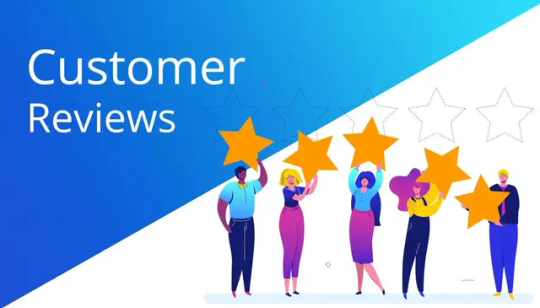
Reviews are more than just a way to boost your reputation; they play a major role in local search rankings. Positive reviews not only attract more customers but also signal to Google that your business is trustworthy and relevant. Encourage your clients to ask happy customers to leave reviews on platforms like Google, Yelp, and Facebook.Keyword Suggestions: "positive customer reviews," "get reviews for local businesses."
4. Provide Locally Relevant Content
Content marketing is the cornerstone of any successful local SEO strategy. Create videos, blog posts, or social media content targeted to the local audience. For example, write about events, news, or topics relevant to your client's location and industry. This will help your business establish a reputation as a local authority.
Keyword Suggestions: "local blog topics," "community engagement," "local content marketing."

5. Create Local References
Every internet reference to your business's name, address, and phone number (NAP) is referred to as a local citation. Your chances of ranking well in local search results increase with the consistency of your NAP information across different directories and websites. Make an effort to get listed in reputable local directories, such as the Yellow Pages and Yelp.
Keyword Suggestions: "local citations," "business directory listings," "NAP consistency."
6. Optimize for Mobile Searches
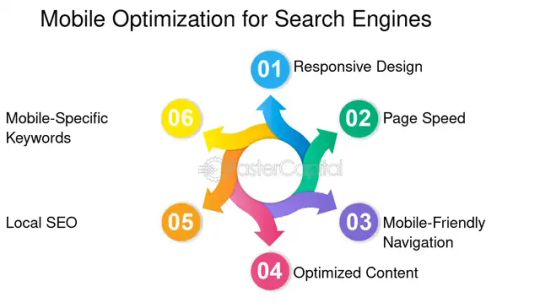
Your client's website needs to be mobile-friendly because more and more customers are using mobile devices to search for businesses. Mobile-friendly websites rank higher thanks to Google's mobile-first indexing. For a flawless mobile experience, make sure that the content is optimized, navigation is simple, and loading times are quick.
Keyword Suggestions: "mobile-friendly website," "optimize for mobile SEO."
7. Implement Local Structured Data Markup (Schema Markup)
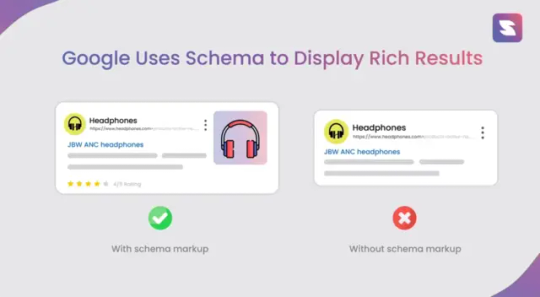
One effective technique to aid search engines in understanding the business facts of your clients is to use schema markup. By adding structured data to a website, it facilitates search engines' display of pertinent local information in search results, such as the name, address, phone number, and reviews of nearby businesses. Local schema markup implementation can improve search result listings and raise exposure.
Keyword Suggestions: "structured data markup," "local schema markup," "enhanced search listings."
8. Use Location-Based Landing Pages

If your client has multiple locations or serves different neighborhoods, create dedicated landing pages for each. These pages should target the specific location, use local keywords, and include information relevant to the local audience, such as neighborhood events or local partnerships.
Keyword Suggestions: "location-specific landing pages," "neighborhood pages," and "local landing page SEO."
9. Leverage Social Media for Local Engagement

You may improve your local SEO efforts and interact with your local audience by using social media networks. Your clients can increase brand recognition and authority in their area by utilizing location tags, joining neighborhood groups, and taking part in community discussions. Additionally, search rankings may benefit from social signals.
Keyword suggestions: "local social media marketing," "social media engagement," and "location-based hashtags."
10. Monitor and Track Local SEO Performance

Finally, it's critical to track and evaluate the results of your local SEO activities regularly. To monitor traffic, conversions, and keyword rankings, use tools such as Google Analytics and Google Search Console. This will enable you to hone and enhance your approach for greater outcomes.
Keyword Suggestions: "Local SEO analytics," "track local rankings," and "monitor local SEO performance."
Concluding remarks
Local SEO will be a crucial component for companies hoping to thrive in their local marketplaces in 2025. These tactics will help you, as a freelancer assisting customers, increase their visibility, increase traffic, and expand their business. Your clients will dominate their industry, experience steady growth, and build a devoted clientele by adhering to these ten tried-and-true principles.
It's time to start implementing the strategies you have learned that will help you dominate local search.
Are you prepared to help your clients grow their businesses? Get in touch with us right now, and together, let's maximize local SEO's potential!
2 notes
·
View notes
Text

reddit begging on its hands and knees whenever you take a screenshot
7 notes
·
View notes
Text
🚀 Meta's New Ad Tools for Facebook & Instagram Are Here! 🎯

Meta just released exciting updates to its ad platforms, aimed at making your campaigns smarter and more effective. Here's a quick look at what’s new and why it matters:
1️⃣ Smarter Targeting with AI: Meta's AI-powered optimization helps you polish your ad targeting. Whether you're customizing ads for different audiences or adjusting campaigns, these tools are designed to reach the right people more efficiently.
2️⃣ New Incremental Attribution Model: This new attribution setting targets those who are more likely to convert after seeing your ad—customers who wouldn’t have taken action otherwise. Early tests show an average 20% increase in incremental conversions, ensuring your ads have a real impact.
3️⃣ Better Analytics Integration: Meta is simplifying connections with external analytics tools like Google Analytics and Adobe, providing a clearer view of how your campaigns perform across platforms. Now, you can track and understand the full customer journey, from paid social to SEO, all in one place.
✨ Key Features :
- Conversion Value Rules: Prioritize high-value customers without creating separate campaigns. Adjust your bids for different customer actions based on long-term value, so you can place higher bids on customers who offer more value over time—all within the same campaign.
- Incremental Attribution: Focus on “incremental conversions”—customers who wouldn’t have converted without seeing your ad. Early adopters have seen a 20% rise in these valuable conversions.
- Cross-Platform Analytics: Meta’s direct connections with analytics platforms allow you to merge data from different channels, giving you a holistic view of your ad performance. Early tests show a 30% increase in conversions when third-party analytics tools like Google Analytics are used alongside Meta ads.
These updates are about improving the precision and efficiency of your ad campaigns. Meta’s new AI-driven features help you achieve better results, make smarter decisions, and maximize the value of your ad spend.
💡 What to Do Now :
✔️ Review your current Meta ad strategy to ensure you're ready to take advantage of these tools.
✔️ Map out your customer journey to identify where these new features can add the most value.
✔️ Be prepared to test these updates as they roll out—early adopters are already seeing impressive gains.
How do you plan to use these new Meta tools? Share your thoughts in the comments below! 💬
📌Follow us on Social Media📌
📢 LinkedIn — Vedang Kadia — Amazon Associate | LinkedIn
📢 Quora — Vedang Kadia
📢 Tumblr — Untitled
📢 Medium — Vedang Kadia — Medium
#digital marketing#social media marketing#facebook ads#instagram ads#adtech#facebook meta#artificial intelligence#data analytics#google analytics#seo services#tumbler#search engine optimization#marketing strategy#tech news#openai#india#chatgpt
4 notes
·
View notes